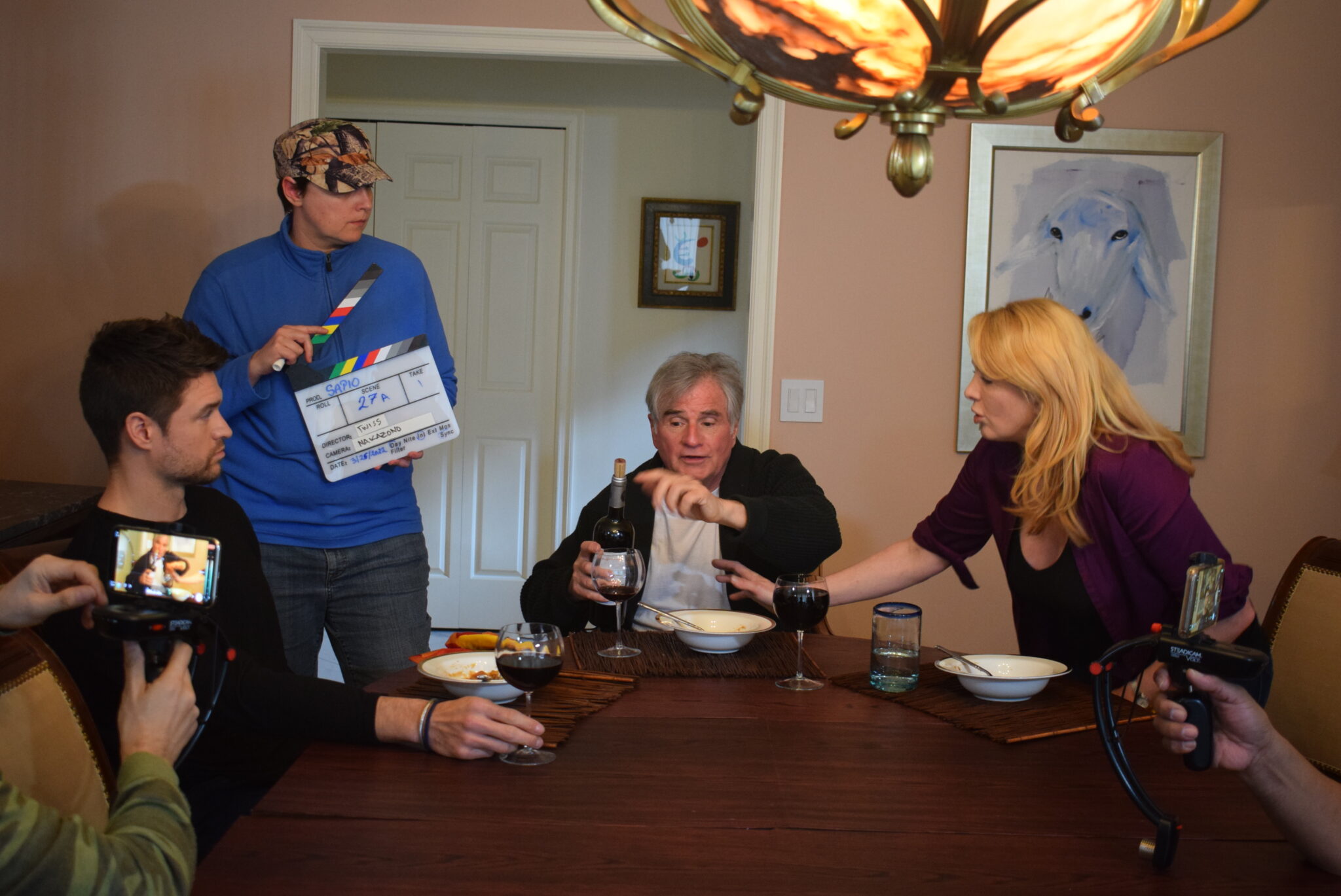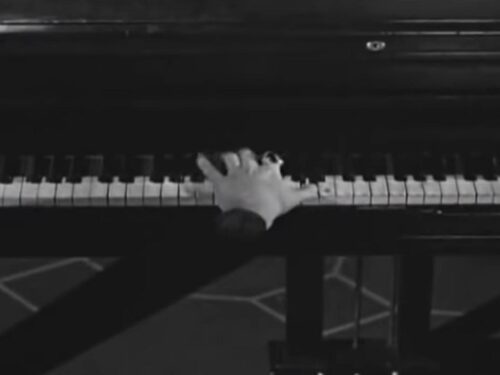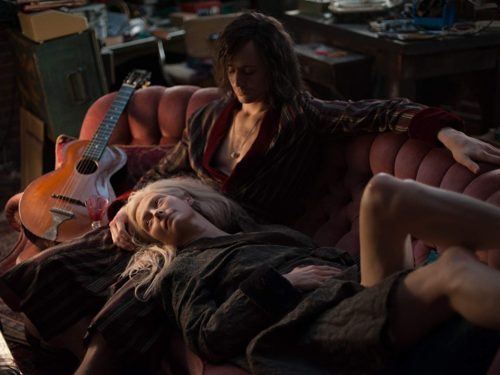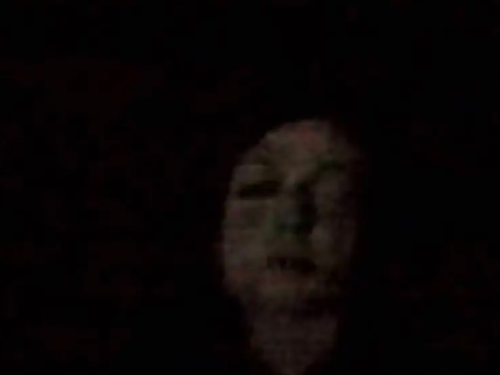From A Gun for Jennifer to recent projects like Sapiosexual, Twiss discusses her career in independent film and television
Arriving on the festival circuit in 1997, A Gun for Jennifer was, and still remains, a veritable shotgun blast from the tail end of the American indie film boom. It was the debut of co-writer/producer/star Deborah Twiss, whose own experiences as a dancer in New York served as the inspiration for an explicitly feminist revenge thriller, one shot on grimy 16mm and steeped in the storied history of the city’s exploitation cinema and underground punk rock ethos. Twiss plays the titular Jennifer, who, upon arriving in NYC after ditching an abusive marriage, is immediately pulled into a back-alley where two men assault her. A group of female vigilantes rescue her and subsequently bring Jennifer into their fold as they stalk the streets holding men brutally accountable for their abusive behavior. This is a film that opens with the vigilantes bursting into a wealthy rapist’s apartment and castrating him and then just keeps flooring it through all manner of violent confrontations and bloody shootouts from there.
Despite shaking up audiences at fests like Fantasia and Oldenburg, A Gun for Jennifer nonetheless struggled to find distribution. And after an intensive years-long production process, Twiss and director Todd Morris became unwittingly entangled in legal complications resulting from a fraud investigation into one of their film’s investors. But over 25 years later, the film has gloriously re-emerged thanks to last year’s special edition Blu-ray release from Vinegar Syndrome, spurring on new generations of cult film fans to vibe with Twiss’ radical and prescient vision.
Twiss certainly hasn’t been inactive in the intervening years. She boasts a lengthy list of acting credits (which includes a recent lead role in Human Centipede director Tom Six’s still-unreleased new provocation, The Onania Club), while also finding time to write and direct a number of her own features. Among these are 2014’s A Cry from Within — an evocative possession horror in which Twiss stars alongside Eric Roberts and Cathy Moriarty — and last year’s edgy psychosexual chamber piece, Sapiosexual (2023), both of which see the filmmaker dissecting many of the same themes of male-perpetrated abuse that pervaded A Gun for Jennifer.
Between Gun’s newfound resurgence and the recent streaming debuts of both Sapiosexual and a new director’s cut of A Cry from Within called Sebastien (the film’s original title), which properly restores Twiss’ initial vision, the multi-hyphenate behind them all sat down with me for a comprehensive interview about a badass career that truly embodies the notion of independent filmmaking.
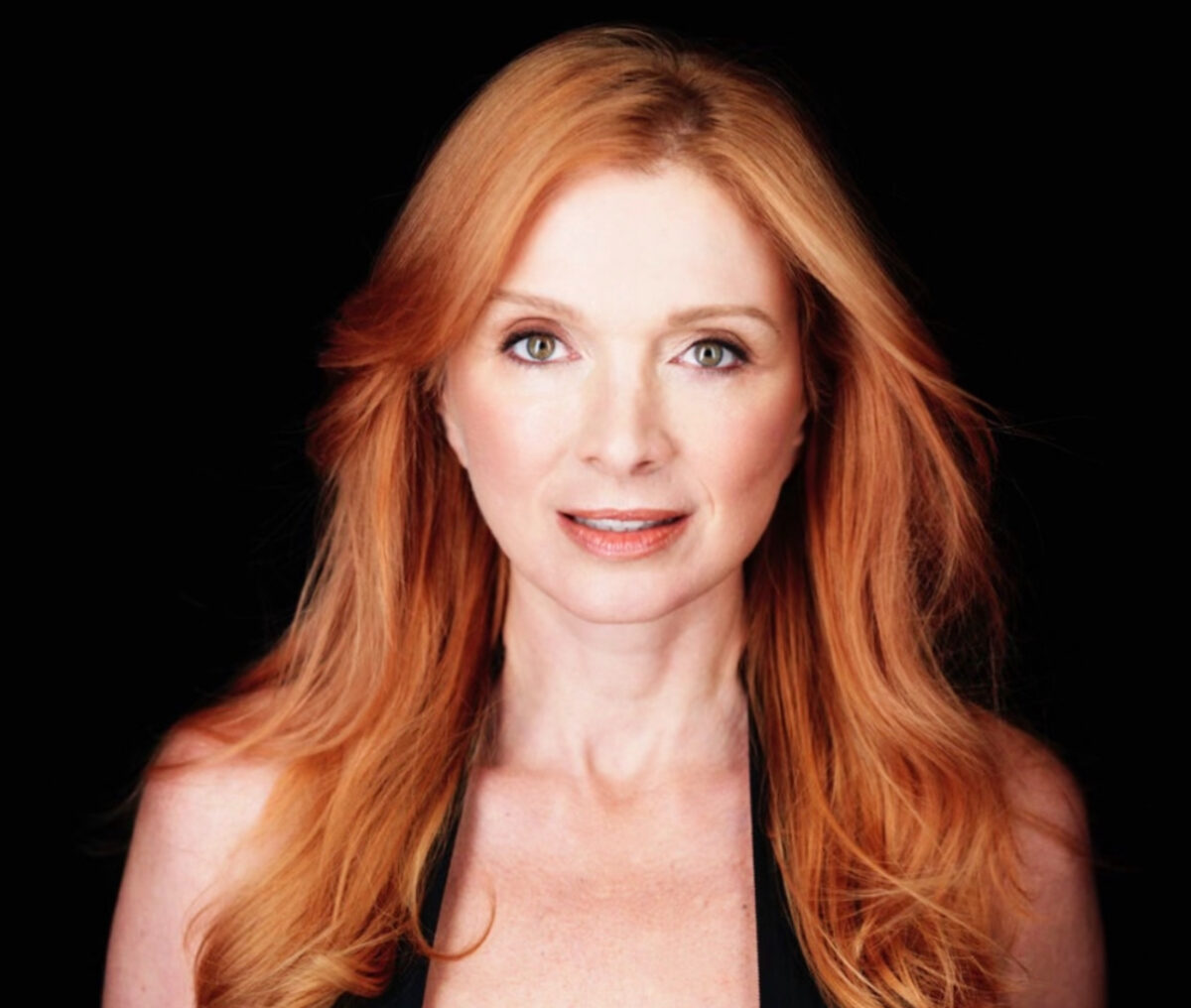
Mark Hanson: Let’s start with A Gun for Jennifer, which just got a beautiful Blu-ray release from Vinegar Syndrome. After going criminally underseen for decades, I’m wondering how it feels now that people are finally discovering and catching on to this bold vision of yours.
Deborah Twiss: It’s absolutely amazing. It’s just one of those things that proves that everything has its time. You plant a seed and sometimes that seed takes a long time to sprout. The beautiful thing is that Vinegar Syndrome really went all out. They rescued our negative. The guy that did our original blow up, from 16mm to 35mm, held on to the negative because we still owed him $9,000. We weren’t allowed to have access to it but he remained a friend. Five years ago, he said he was approached by Vinegar Syndrome who said they wanted to pay our debt and take the original negative and transfer it to DCP. I was like, ‘You’ve got to be kidding me. He’d be good. We’d be good.’ And he was the one who actually did the transfer from the negative, which he’d been vaulting and taking care of like a fine wine all these years. I’ve never seen the movie look as good as it does on that Blu-ray. All the prints we had never looked that good. They did an amazing job.
I have a little production company thing so I was the one who put together the behind-the-scenes [documentary]. There were a couple moments that were scary for me to reveal, things about where I was at back then. I was a baby, I was in my 20s. I allowed things that I would never allow in a million years at this point. But you know, at the time, I’m a young girl alone in New York City. Even though the film is about female empowerment, I was still under the curse of the concept that a man could save me. It was quite eye-opening to go back to those places.
I did watch the behind-the-scenes documentary and admired how you talk so honestly about the struggles you encountered on this film. From the long production process to the investor who was unknowingly embezzling funds, which is a wild story on its own, to finally getting the film out there and playing film festivals to so much acclaim, but then ultimately still having to deal with lingering legal issues from that investor…
Here’s the thing. Because of everything in my life… I mean, I moved 17 times when I was growing up, and I discovered [the New Age philosophy beliefs of] Abraham-Hicks and Seth Speaks way back when I was in elementary school, so I’ve always been a big follower of the law of attraction, metaphysics, that kind of thing. What happened in my life is part of my soul’s development. Basically, there’s nothing that I would have changed because everything led me to where I am now and I’m very grateful about who I am and who I became in the process. So while I could go back and say, ‘I should have said no,’ or, ‘I shouldn’t have gone back to dancing,’ every thought, every choice, every step helped me grow into who I am now. I have absolutely no regrets.
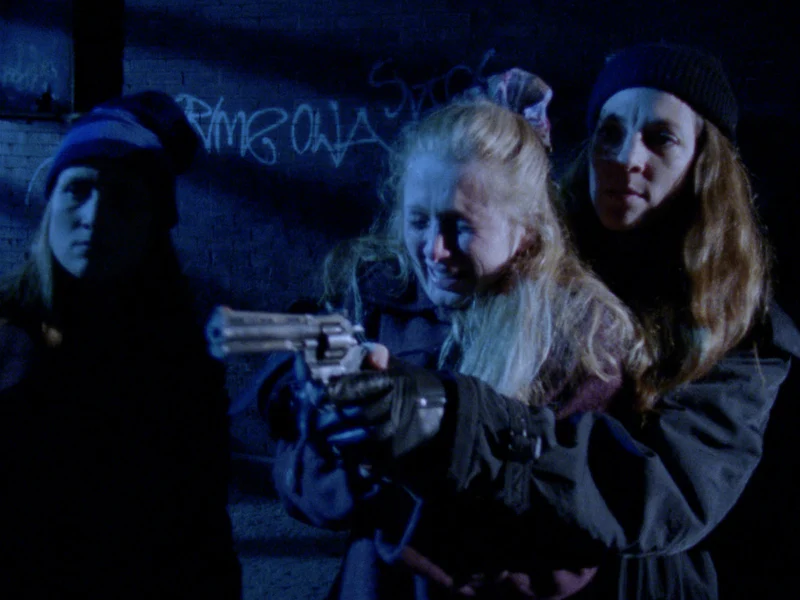
The look of this film really is quite striking and I love the 16mm aesthetic. You’re clearly throwing back to ’70s and ’80s exploitation films but also just the history of underground New York cinema in general. There are the obvious inspirations like Ms. 45 or the films of William Lustig but it also feels like you’re in sync with the Cinema of Transgression movement as well. In the behind-the-scenes doc, you mentioned your admiration for Kembra Pfahler, who was a big part of that scene. How explicitly were you drawing on the legacy of New York cinema when you were making this? Or was that not really on your mind?
Not for me, because I wrote [the film] and then was focused on acting and producing. Todd, however, was very much driven by emulating that gritty New York Taxi Driver thing. The things that I liked and wanted to have part of it was more of a Cassavetes type of thing, where the dialogue and the way the characters relate feels very real and natural. So I think Todd and I made a really good team. He was very good about maintaining his vision of doing this throwback to grindhouse-type cinema. I remember very vividly around that time we went to see Tank Girl and we were like, ‘yeah, this is A Gun for Jennifer on a $50 million budget.’
But overall, what we captured was the way New York looked at that moment. I mean, it was when that Times Square arts project was going on. This was right before Giuliani came in and did a massive cleanup and Disney basically took over 42nd Street. In a way, it’s worse now than the ’70s.
Yeah, the film does feel like that last gasp of the way New York City was.
This was before 9/11, too, so we still had that hope. There was this very different kind of feel where anything was possible, like we could withstand anything. But we did not have any kind of direct knowledge of the fact that we were actively being hated by people who wanted to kill us all.
The thing that drew me to New York was the fact that it felt like the ultimate melting pot. People come from all over the world to go there. And, you know, most of us are weirdos. So when weirdos band together we are the norm. It felt good and it felt so right. I thought I could just be in New York City and make independent films the rest of my life. But yeah, the things that came after, it’s like one hit after another. Now I live 12 miles from the sea and I can see Manhattan from my living room. And I like to go in and visit, have dinner with someone, and then run back to New Jersey.
That melting pot aspect is reflected in the film through your wonderful cast. You portray this feminist uprising in a way that’s not just a white heterosexual thing. It’s a very diverse community of women that are coming together to make this statement.
Yeah, I finished writing this in ’91 and we started filming in ’93. You know, walking down the street, there’s every ethnicity, every sexual orientation you could possibly imagine. But whenever it came to indie film it was always, you know, white people doing shit. That’s not real. That’s not the city.
Benja [Kay], the woman that played Detective Billie, reminded us that our original breakdown was for somebody Puerto Rican or Hispanic to play that role. But then she came in and was like, ‘Well, you know what? Maybe I’ll just, uh, submit anyway.’ We called her in and she just blew us away. We were like, this is our lady. This is our chick. She’s good.
She’s awesome in it.
Yeah, and we’ve maintained our relationship. She’s been in just about everything I’ve ever made.
A lot of films claim to be punk rock but this one literally is punk rock. The soundtrack features tracks from a bunch of notable Queercore bands and the Tribe 8 show that the characters go to is the perfect centerpiece for the film.
I’m so glad we were able to capture that. I don’t think Tribe 8 had ever been featured in a film before. And they did not continue on much longer after that moment. One of the members left to start directing films. Then Lynn Breedlove started this really cool car service in San Francisco [Homobiles]. So the fact that we were able to capture that moment and at Mercury Lounge, which still exists, is crazy.
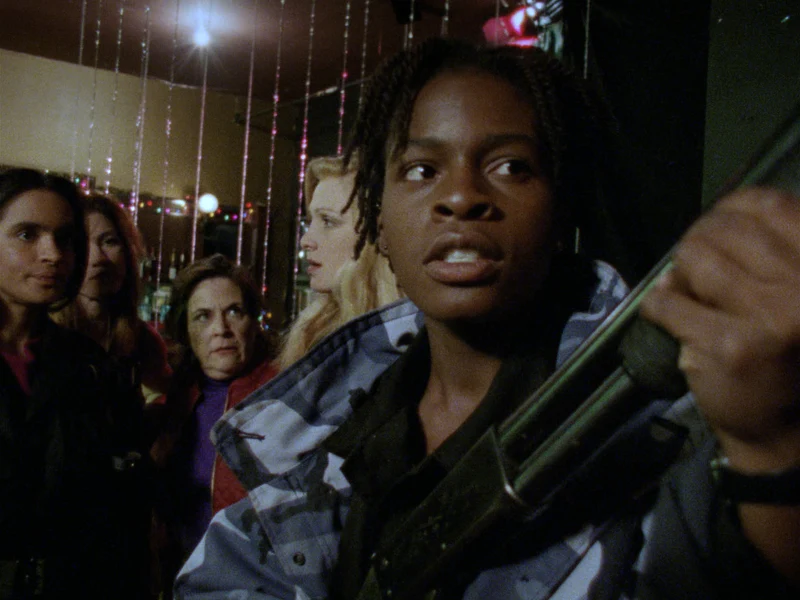
Did you have relationships with these bands prior or did you approach them at a certain point?
We met Brooke Webster, who managed Tribe 8. She ran this lesbian club on the Lower East Side called Meow Mix and she knew all these really cool lesbian punk bands and performers and stuff like that. Todd and I would go hang out with Brooke at the bar and we’d walk in and all the women were happy to see me, but they’d be like, ‘what’s this guy doing here?’ And we would just hang out and talk to Brooke and listen to this great music.
You see it a bit more nowadays but I feel like no one was really doing this kind of feminist vigilante flick at the time. And it’s so prescient in terms of its content too. You hit on some things, regarding powerful men and the abuse that they inflict upon women beneath them, that have obviously continued unchecked into the present moment.
Just looking back at the last 20-30 years and the crazy stories that have come out… The fact that you’re now hearing stories about men who have been abused, molested, things like that. And isn’t it always guys in power that are getting away with this shit? Maybe it’s a human condition. Maybe it’s that animal part of us that looks up to these men, these beings, these species of human that seem to be alpha or have more power. And then there’s such an innate fear of trying to take down the alpha that we back away in fear. But also, you know, people get paid off. And in the world that we live in, people need money. And if they realize that they can get paid a bunch of money and that will help their life, to be able to continue on, then they’ll take the money and stop talking.
There’s that great moment in the film where a character says in protest, ‘Well, not all men do this. Only some.’ And the response is, ‘Yeah, that’s great, but it seems to always be men that are the ones that do it.’
It’s very clear when people sexually molest or harm another being. It is not really about sexuality; it’s about power. It’s about control. It’s about manipulation.
I want people to discover your other films because you’ve continued to make really excellent and interesting stuff in the years since A Gun for Jennifer. Your 2014 feature A Cry from Within was actually my first introduction to your work a few years ago. My partner and I were just scrolling through Tubi trying to find a horror movie to watch and we just, for whatever reason, settled on this one. It really stuck with both of us and that’s kind of what kicked off my exploration into your other work. Like A Gun for Jennifer, this film was also based around your true experiences, this time on actual hauntings that you encountered. Did you have aspirations about making a horror movie before the real hauntings in question happened to you?
Absolutely. I was raised by my Polish aunts. They were my grandmother’s sisters and they had this whole Eastern European, almost gypsy sort of thing, where they would see dead people all the time. They taught me how to meditate and talk to the other side and other crazy things. So it’s very much a part of my life.
The cool thing is, for quite a while and even now, my kids and I are all very in tune with the other side, my daughter more than my son. We were living in Brooklyn where my husband’s parents lived. They had bought this brownstone in Cobble Hill back in 1962 or ‘63, around the time my husband was born. They had never noticed anything weird, but very quickly, once me and the kids got there, things started to happen. My daughter was like a year old and there was this thing that she called the ‘bad boy,’ and the bad boy would smack her, pull her hair, trip her, do all these things to get her attention.
We did this thing called a ‘family bed.’ We had two king-sized beds put together so we could all be on the bed together because we just wanted the kids to have a different kind of upbringing than a traditional one where you just stick the baby in the crib, let him cry it out, this and that. And it was so fun. You know, the kids are both like, ‘Yeah, when I have kids, I want to do that too!’ But my daughter told me that she would wake up in the middle of the night and see [the Bad Boy] crouched on the pillow on top of me, watching her. And she would close her eyes and just stick her head under the covers and cuddle up to me. Yeah, it’s pretty wild. So all this crazy shit that we went through is very much in the movie.
I was writing it really late one night. My husband and the kids were in the bed and we were all on the parlor floor. That’s where we had our family bed and then there was my writing cabinet, where the sofa was and everything. And I’d been up until like 2 in the morning, and I was really tired. And I thought, this is wrong. I’m making something that’s going to be a commercial piece off of some child that was clearly killed in this house and is suffering. And maybe, you know, if I stop this, he’ll just let us be. So I close the computer and go to bed. I was laying there and then all of a sudden, I heard something like a child slip off a chair, then little feet hit the hardwood floor and walked all the way to my side of the bed and just stood there. I could hear the breathing. What am I supposed to do? Open my eyes? Because I didn’t want to see. I was like, ‘just tell me, what do you want me to do?’ And I realized I had to tell the story. ‘I’ll do it. I’ll tell the story. I’ll get it made. Just, you know, don’t hit my daughter anymore. Don’t hurt her or scare her.’ And that’s when it stopped and I did the film.
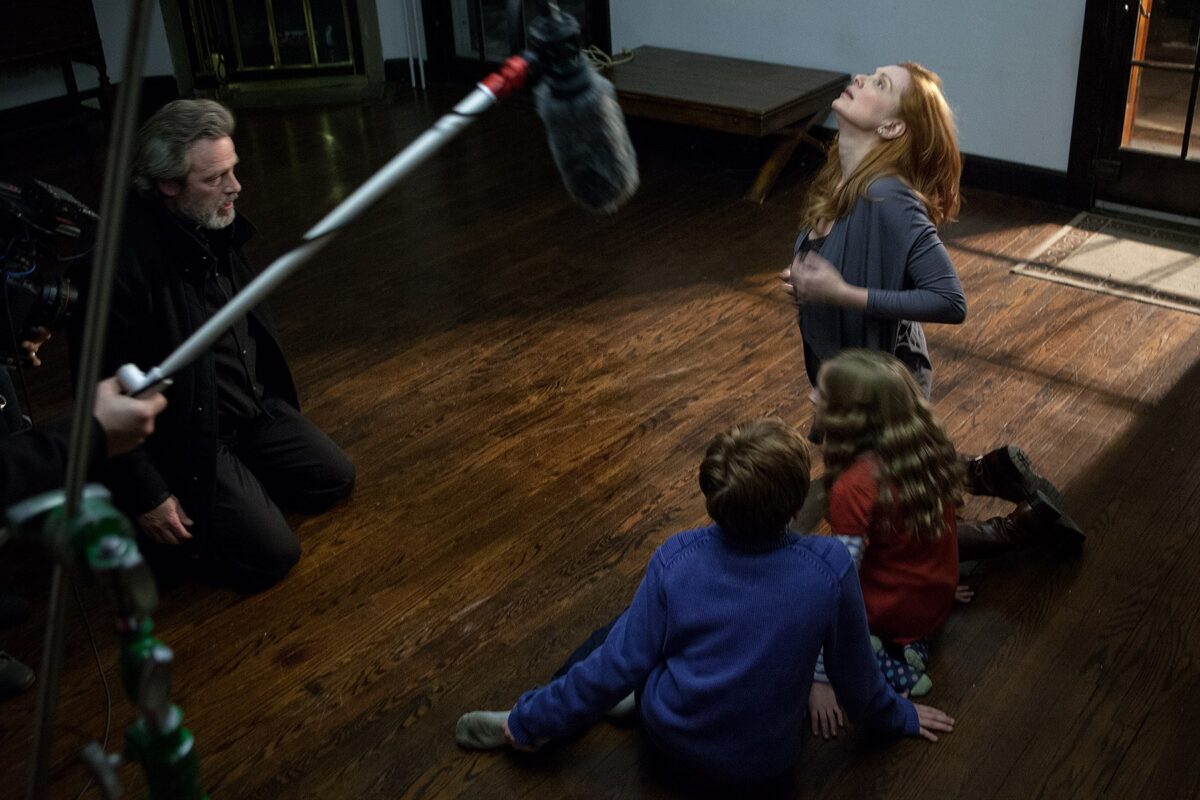
You can certainly feel the weight of those experiences, or even the spirits themselves, within this film. I was really struck by how you feel the POV of the ghost throughout, through the camera work and your editing choices. It gives it a subtle element of fear that lingers long afterwards.
Oh, cool. Did you see [the director’s cut] Sebastien yet?
I did! I only read recently that you had done this new director’s cut of the film. The major changes seemed to be in the beginning section, where the role of the co-worker and the affair between him and your own character is much more prominent. The pronounced marital discord was far more interesting. Why was that cut out in the initial version?
That was very much against my wishes. And also the original title was supposed to be Sebastien because this revealed to us that the ghost’s name was Sebastien, you know.
Exactly. A Cry from Within is kind of a generic title that could get lost in the shuffle.
Yeah. The producer’s rep I had was trying to market it to Christian channels at the time, which doesn’t really fit with me.
Had they seen A Gun for Jennifer?
Or read about the fact that I danced for ten years?
So they were like, ‘Look, in order to make your character more likable, she can’t have an affair.’ And I was like, ‘But that is huge. That’s an important part.’ I mean, the husband [played by Eric Roberts] is having fantasies about the women he’s counseling. She’s having an affair with this guy at work. You don’t know if the baby that she’s pregnant with is from the guy at the office or her husband. That is critical because this spirit was looking for somebody who wants to be sexual and be procreating. It’s seeking that.
I don’t know if I had this line in this film, but I thought it the whole time I was writing: ‘Places aren’t haunted. People are.’ The spirit was already in the Brooklyn house that they were in at the start of the film. Before they go to the new place, they’re drawn by that spirit. The spirit guides them. It was really important for me to go into the depths of what was wrong with the family and what they had to come to terms with in order to find their new beginning. You know, the deeper and darker the place that people come from, the higher the potential there is to learn something. That’s just how I see it.
So during the pandemic, Rich [Wolff] at Breaking Glass [Pictures, who put out the film] reached out to me and said A Cry from Within was doing well for them. And I’m like, ‘Rich, would you ever let me do a director’s cut?’ I told him everything I just told you. And he was like, ‘I would love that. Let’s go to contract now.’ And then I just dove in. There were a lot of scenes that I fixed the color correction on, too.

A lot of older movies in this vein, like, say, Rosemary’s Baby, might have a female protagonist but it’s still filtered through a male perspective. This obviously feels very much from your point of view, and you really dig into the idea of generational abuse and trauma passed down through the film’s female characters. I thought this was perhaps chiefly embodied by the character Cathy Moriarty plays. She’s a legend, of course, and brings so much dramatic heft to every scene of hers. What was it like working with her?
She’s just so, so incredible. She brought to that role everything that I could have ever hoped for and imagined. I just think she’s incredible. She’s such a talent. Really amazing. I love her.
I also really liked Eric Roberts in it. I mean, I love Eric Roberts in general. I think that was part of the reason I decided to watch it in the first place. Him and Cathy Moriarty.
That’s so cool. And it’s so funny. He loves working. He really does. Like 200 movies a year.
His upcoming IMDb credit list is just insane. Obviously, some of the films he does are just like a quick appearance. But in this one he is very much a major character and he integrates so naturally into the family dynamic, since he’s playing opposite you and your kids. And I love how amusingly he plays that aloof dad, in contrast to the female characters who are so much more alert. He is that great counterbalance of this guy who doesn’t really know what’s going on. It’s one of the better later career performances I’ve seen from him. Was he having fun doing that role?
He did. And the cool thing was, you know, because he does so many things, he’s just like, “I don’t want to freaking deal with lines. Just put the cue cards out.” So we had cue cards for the first three days. And finally, I was so upset because we’d be in a scene and he’d be looking past me. And I just said, ‘Look, Eric, I can’t do this. We’re supposed to be connected. The beauty of acting is being together and connecting heart to heart. I wrote this, I don’t give a shit what you say.’ So for each scene, we had a beginning, a middle, and an end with some points that needed to be found throughout. We had two cameras, sometimes three, going. I’m like, ‘Say whatever the fuck you want and I’ll follow your lead and we’ll get to the end of the scene and it’ll be amazing.’ And he’s like, ‘Seriously, girl? Oh, babe, I love you.’ From there we just had so much fun.
Your most recent film, Sapiosexual, continues to examine abuse from powerful men and how that trickles down through the victims left in its wake. Like A Gun for Jennifer, it’s also another story about revenge, but one that takes the form of an intimate chamber drama. I know you have a theater background, so were you trying to get back to a more stripped-down, stage-like production with this film where it’s just a few characters in mostly one location?
That’s why I had it take place during a storm so that basically they’re trapped. It’s almost like [Jean-Paul Sartre’s] No Exit, where they’re in this place and they have to deal with their demons. There’s no choice. They have to confront all the shit between them and what’s going on inside of themselves. This was based on a short story that my friend wrote, and her story was just about these three people that meet for one crazy night in a shower at a beach house. And I asked her if I could make this into something really beautiful. Maybe if I could just shoot it as a short in black and white on film. And then I thought, just make a feature. Add an act three. So I just banged it out and we went and shot it. A lot of it feels like it’s improv, but it’s all scripted. And I even pitched it to my actors the same way I pitched to Eric. But they stuck to it verbatim. I think they did an excellent job. The one thing I’m not proud of, though, is that I was 40 pounds heavier. I was going through a lot of shit. My husband unfortunately died last April.
I read that. My condolences. I’m really sorry to hear that.
I don’t eat differently or work out any differently but it was just the literal psychological weight of what I was going through watching my husband dying. I tried to watch the film the other day and I just couldn’t. I was like, ‘Oh my God, you poor baby. You were dying yourself.’ Clearly that fat was on you, just sucking in all the toxic emotions so that it wasn’t going to affect your internal organs. I think it was like cortisol and adrenaline stored in my fat because if it would have released into my system, I’d probably have dropped dead of a heart attack instantly.
Rich and I are really looking forward to this new film that I’m about to do, though, called Look at Me, which is very sexy. It’s very, very, very, very sexy. I was like, I need a story like this. Basically, it’s this really hot story about a woman who has been married to this older guy for 15 years. When she married him, he had two kids. One was in elementary school, the other was almost graduating from high school. And now time has passed. She hasn’t seen the stepson for seven years. He’s a famous photographer and he comes to stay with them. You know where this is going, right? Meanwhile, the daughter is a train wreck. It’s a lot of fun. And it’s really sexy.
I love that you’re fearlessly smashing boundaries and taboos. I know you’ve spoken about wanting there to be more roles for women of all ages to be sexy and courageous on screen because it’s so stupidly rare in Hollywood. Sapiosexual is incredibly hot and sexy as well. But then it’s tied up in this abusive situation so it complicates those feelings. I’m excited to hear that your next film covers more of this terrain.
This next one is going to be pretty wild. And it’s going to be shot better too. We actually shot Sapiosexual on iPhones. It’s good for certain things but I wouldn’t do it completely like that again unless I had somebody that was very well-trained and knew how to light properly for it. It was an experiment that went well, but I think it could have been a better film if it had just been shot better.
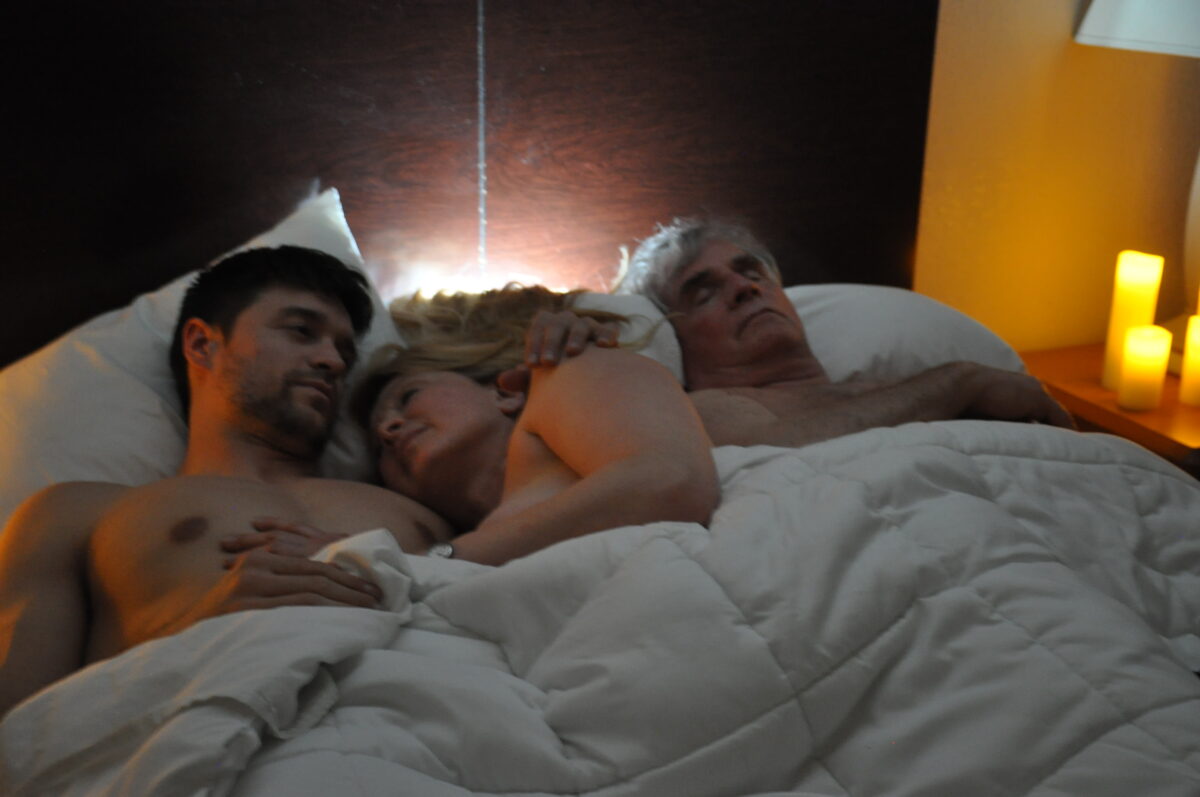
I see what you mean but I have always been drawn towards that verité kind of style that Sapiosexual has because of it. I’m also just so taken with the performances and the ideas going on in it that I can certainly look past that. Is it easier or harder making a smaller film like this as opposed to something a little more expansive like A Gun for Jennifer or A Cry from Within, both of which have multiple locations and larger casts?
I actually think it’s a lot more fun, right? There’s also a beauty in the idea that you just need a decent gaffer that understands what an iPhone does and what it doesn’t do. The way these phones work now, they’re so good. There are tons of videos all over YouTube that show you comparisons, like this was shot in Filmic Pro on iPhone in 4K and here’s the same shot on the RED. Both have been color graded to match and only a DP could even try to imagine the difference. And sometimes the DP doesn’t always get it right. So it really comes down to having an amazing gaffer. A gaffer, to me, is probably the most important job on the set.
And it’s the kind of role that never gets the right amount of respect either.
Yeah, totally. I met this amazing gaffer on this great new film that I acted in with Sean Young, The Dummy Detective. They shot it on the RED and the gaffer was Michael Fisher. He’s based out of Vermont. I have never seen lighting like this on anything independent whatsoever. I’ve been in big movies, like Kick-Ass and tons of TV, but I have never seen the level of artistry that this guy is capable of. I don’t know what I can do to tempt him to come and light my movie. Because I know if this guy can come and do this, it will look like a $3 million film.
But the beauty of making Sapiosexual was our days. We shot it in three 8-hour days. And we had two cameras going at the same time. We were cranking out 23, 25, 30 pages a day. There were times we were sweaty by the end of the day because we just worked so much. And then, you know, it gets done and it’s like, ‘Oh, we made our pages. What do we do? Well, let’s just go out to dinner.’
It does feel like that theater experience of putting on a play with friends and just rehearsing, rehearsing, rehearsing and then getting up and doing it.
It was so fun. I love it. I just want to master how to capture it because I would love to work like that often. I could easily make a movie every couple of months if I could have it look good. I come up with ideas constantly. I’ve got tons of things that I could create just because my brain works that way. Every time I go walk the dog, I come up with another idea. And with 11 dogs, it’s a lot of walking. I just want to master how to do this. There’s still a ton I don’t know on the tech side.
Beyond Look at Me, what else are you working on now?
Well, one thing is my series Crazytown. It’s fun. It’s ridiculous. After countless movies where dudes direct and they show what a strip club is, with the girls all having lesbian relationships and the dressing rooms are so stupid, with boas hung everywhere. It’s like, that’s not what it is. The only thing that’s hung up are people’s jackets. So finally I just said, you know what? Screw it. I’m going to do it myself. We did seven episodes that are 30 minutes each. It’s really funny but it also has some dark stuff going on in it. Every character is based on or an amalgamation of women that I knew. And every single guy is very specific to somebody I know.
It seems like you have a wealth of material to draw on from your own personal experiences.
[I have] days upon days of material. I also wrote this script called Trail Blazers that will hopefully finally get made. That’s a bigger budget thing. It’s a little bit like a Star Wars post-apocalyptic type of thing. Then I started a series called A Beautiful Distraction a few years ago. It almost got picked up by Amazon, but then they decided not to at the last minute. I’m hoping that the guys that are doing Trail Blazers will take this on because it’s really cool. It’s about… so, I watch a lot of Ancient Aliens.I’ve seen my fair share of Ancient Aliens.
This is about who the ancient Greek and Roman gods actually were. Like where they were really from. And the fact that they never left, they’re still here. And they’ve been trying to guide humanity for the last many thousand years. And throughout time, they have actually crossbred with different humans. So there are certain familial lines that may have a bit of this hybrid stuff going on. And it’s not until that DNA is triggered by interacting again with one of the originals that the human genome can be expanded to actually be immortal again and be who we were designed to be from the beginning.
And then I’ll release my film that’s dedicated to my husband, Dean McCann. It’s a psychological horror thriller about addiction and co-dependence. I guarantee you it’s different. And he approved it, thank goodness. I got him to say that before he crossed over.
You act in tons of other people’s films too. I saw a film that you were in recently called The Arrangement, which also had Eric Roberts in it. It seems like you’re just working more than ever these days.
Yeah. I mean, I’ve got two kids in college so I hope to keep working a lot. But I love acting. More than filmmaking, actually. I make films mostly because I have to, because something is in me that just needs to be manifested into the world. But just for having fun and enjoying life, I love acting so much. It’s my most favorite thing ever. I just like that my whole life is about imagination and playing pretend and all my cute little animals. And, of course, my kids, who are like my friends. They even call me Little Debbie, OK? They’re like, ‘Oh, Little Debbie. Debbie with the aliens again?’
So I just work as much as I can. I’ve got an agent and manager. I audition for things all the time. There’s plenty of stuff I don’t get cast in. But all the good stuff that’s supposed to be for me comes to me and that’s great. I think it’s so fascinating sometimes to look at why people are artists, why they’re painters, or filmmakers, or writers, or play instruments. I think it’s about expanding the time that we have here. I think everything we do is about connecting with other people. When you create art, you’re creating something that can reach hundreds of thousands of people. It’s such a privilege to have the ability to really define what your ideas are and share them with the world in a way that gets inside the hearts and minds of other people, and maybe start other conversations that might not be going on.
That’s what’s always drawn me to art as well, that intangible sense of connection you can find with people through it. That’s a really great ethos. Before we wrap up, I wanted to ask about one recent acting credit of yours that remains eternally unreleased, Tom Six’s The Onania Club. You seem to have a pretty big role in it. I’m a fan of his work and I’ve been looking forward to this film ever since I first heard it was happening, and it just seems to be caught up in distribution hell right now with nobody wanting to put it out. How was your experience on that?
We had so much fun. It was completely improv. He wanted really smart actresses who also write so that we would be able to improvise and then do the scene like three times. The group of women just clicked so beautifully and Tom was amazing. His sister Ilona was amazing. I mean, everything about it was fabulous. Some of it is so crazy. I would say to him, ‘So I’m going to try this, let me know if it’s too much.’ And he’d be like, ‘It’s never too much.’ Like, very Gaspar Noé.
He’s such a madman.
Yeah, in the best possible way. We had such a good time. It’s a shame because of, you know, the climate in the world these days causing it to remain unreleased. I’m so disgusted. It just shows how there are certain things people are like, ‘oh, triggers, triggers.’ But if you know you’re going to be triggered by something, just don’t go see it. Don’t try to stop other people from experiencing something. That’s art. What I don’t understand is how that’s going to help the world. It just bothers me to no end. And knowing how nice Tom is, and his sister, and his girlfriend, and all the girls that were in the movie are, and that the movie actually has a really good message.
Yeah, this distaste is clearly from people who haven’t seen the movie. I mean, I haven’t seen the movie either, but from what I’ve read, it seems to be tackling a lot of the injustice and abuse going on in Hollywood today. Yet it’s being deemed too offensive when it’s exploring horrible abusive behavior that goes on every day.
I think it’s holding up too clear of a mirror to the world. Want to talk triggers? Well, that’s the biggest trigger there can be when people are forced to think, ‘Maybe I do get off on watching plane crashes on TV.’
And I think that’s fascinating stuff to explore. I mean, it’s the guy who made The Human Centipede, so I don’t know why anyone is surprised. But I’m really looking forward to seeing it. I hope it comes out at some point. I hope it finds its way out there.
Somehow there’s got to be a way. I wonder if Vinegar Syndrome would take it on.
They do distribute new films too. They could put it on the shelf right next to A Gun for Jennifer!
Purchase A Gun for Jennifer on Blu-ray from Vinegar Syndrome
Stream A Gun for Jennifer on Amazon Prime and Tubi
Stream A Cry from Within and Sapiosexual on Amazon Prime
Stream A Cry from Within and Sapiosexual on Tubi
Stream Sebastien, Twiss’ director’s cut of A Cry from Within, on Amazon Prime

